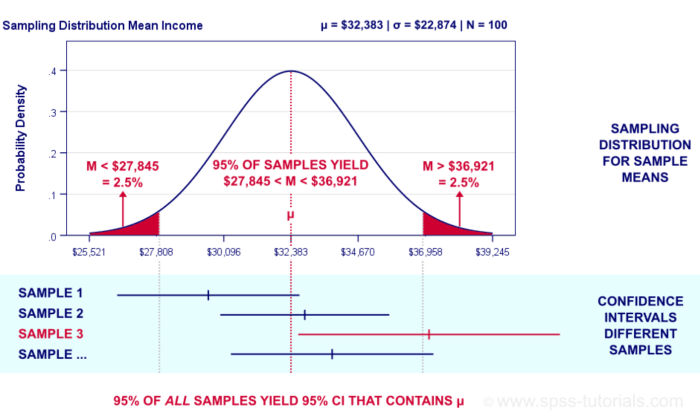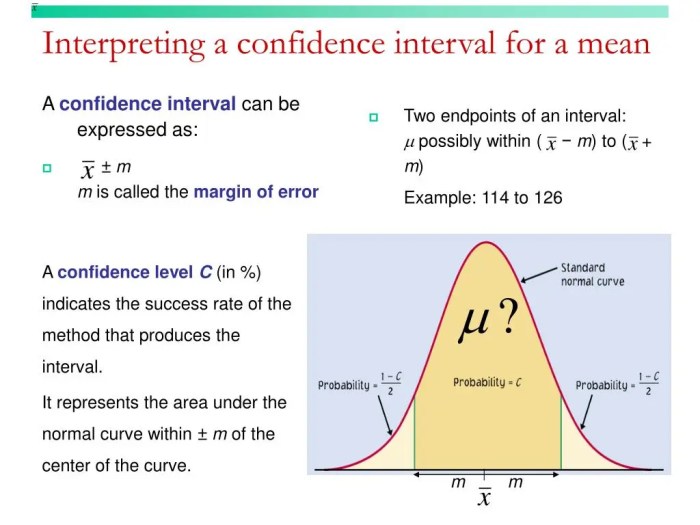Introducing confidence intervals for proportions applet, an interactive tool designed to empower researchers and practitioners with precise estimation and statistical inference. This applet harnesses the power of computation to simplify the complex calculations involved in determining confidence intervals, enabling users to derive meaningful insights from their data.
Delving deeper into the topic, we will explore the fundamental concepts, practical applications, and advanced techniques associated with confidence intervals for proportions, ensuring a comprehensive understanding of this crucial statistical concept.
Confidence Intervals for Proportions

Confidence intervals for proportions provide a range of values within which the true proportion of a population is likely to fall, with a specified level of confidence.
The formula for calculating a confidence interval for a proportion is:
p ± z
√(p(1-p)/n)
where:
- p is the sample proportion
- z is the z-score corresponding to the desired level of confidence
- n is the sample size
Applet for Confidence Intervals for Proportions
An applet for confidence intervals for proportions is a tool that can be used to calculate and visualize confidence intervals.
To use an applet for confidence intervals for proportions, you simply need to enter the sample proportion, the sample size, and the desired level of confidence.
The applet will then calculate and display the confidence interval.
Using the Applet, Confidence intervals for proportions applet
Using an applet for confidence intervals for proportions can be beneficial because it can help you to:
- Visualize the confidence interval
- Understand the relationship between the sample proportion, the sample size, and the level of confidence
- Make decisions about the population proportion
To use an applet for confidence intervals for proportions to make a decision, you simply need to compare the confidence interval to the hypothesized value of the population proportion.
If the confidence interval does not include the hypothesized value, then you can reject the hypothesis.
Advanced Topics
There are a number of advanced topics related to confidence intervals for proportions, including:
- Bias in confidence intervals for proportions
- Methods for correcting bias in confidence intervals for proportions
Bias in confidence intervals for proportions can occur when the sample is not representative of the population.
There are a number of methods that can be used to correct bias in confidence intervals for proportions, including:
- Using a stratified sample
- Using a cluster sample
- Using a weighted sample
FAQ Overview: Confidence Intervals For Proportions Applet
What are the key benefits of using the confidence intervals for proportions applet?
The applet automates complex calculations, saves time, and enhances accuracy, allowing users to focus on interpreting results and making informed decisions.
How can I interpret the results generated by the applet?
The applet provides clear visualizations of the confidence interval, including the point estimate and margin of error, enabling users to assess the precision and reliability of their estimates.
Can the applet handle complex sampling designs?
While the applet primarily focuses on simple random sampling, it can accommodate more complex designs with appropriate adjustments and assumptions.


